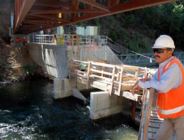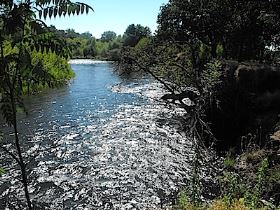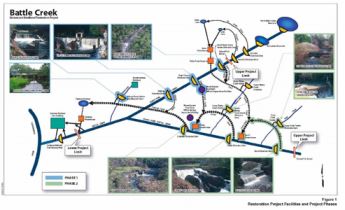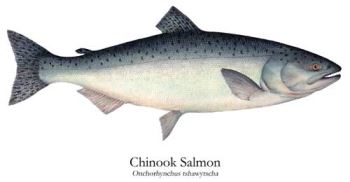
The Battle Creek Salmon and
Steelhead Restoration Project (Restoration Project)
is being implemented near the town of Manton,
California in Shasta and Tehama Counties (Project
Location Map). Upon its completion, the Restoration
Project will reestablish approximately 42 miles of
prime salmon and steelhead habitat on Battle Creek,
plus an additional 6 miles on its tributaries. The
species include the Central Valley spring-run
Chinook salmon (state- and federally listed as
threatened), the Sacramento River winter-run
Chinook salmon (state- and federally listed as
endangered), and the Central Valley steelhead
(federally listed as threatened).
The Restoration Project is a
collaborative effort between the U.S. Department of
the Interior, Bureau of Reclamation, Pacific Gas
and Electric Company and various resource agencies,
including the California State Water Resources
Control Board (State Water Board), the U.S. Fish
and Wildlife Service, National Marine Fisheries
Service (NOAA Fisheries), the California Department
of Fish and Game, the Federal Energy Regulatory
Commission and the California Bay Delta Authority,
with valuable participation from the public,
including the Greater Battle Creek Watershed
Working Group and the Battle Creek Watershed
Conservancy. This partnership provides the
framework for restoring one of the most important
anadromous fish spawning streams in the Sacramento
Valley, while maintaining a renewable energy
resource for electric customers in
California.
U.S.
Dept of Interior description
|


Passages for fish are being
constructed around old dams. Other dams have
been removed. Like lower Battle Creek (above
right), 42 miles of historic salmon habitat will
be restored.

Click the map for larger version.

|